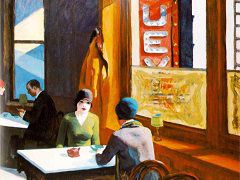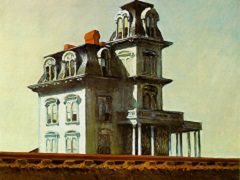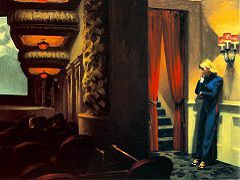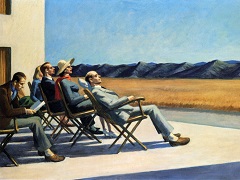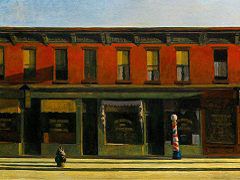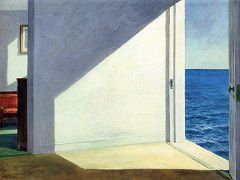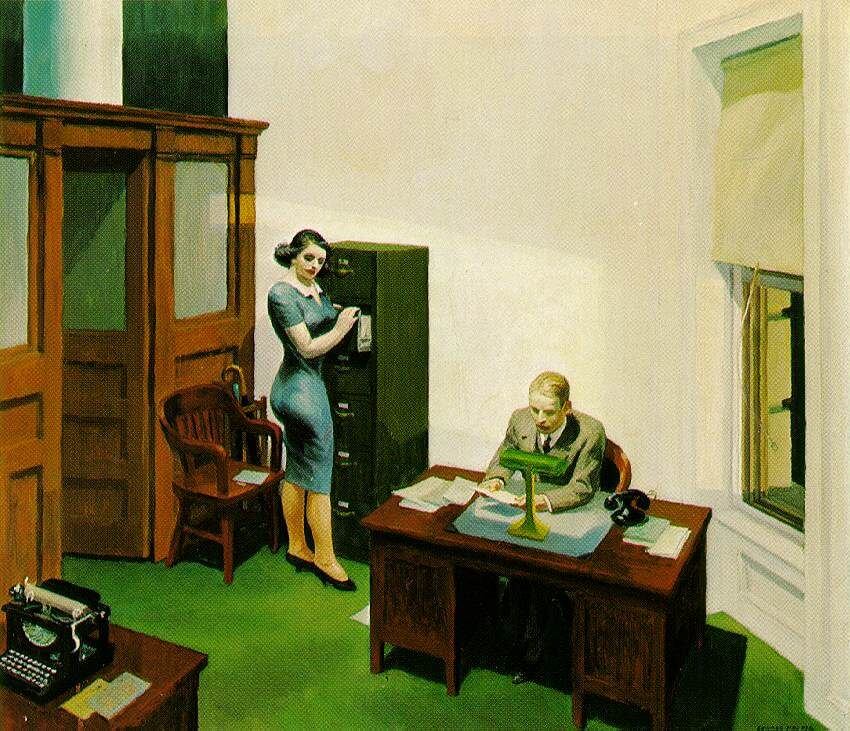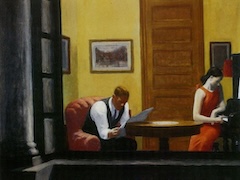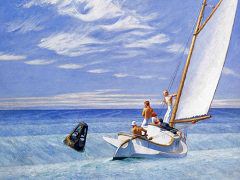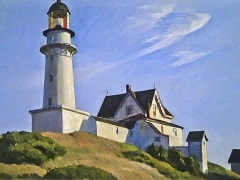House at Dusk, 1935 by Edward Hopper
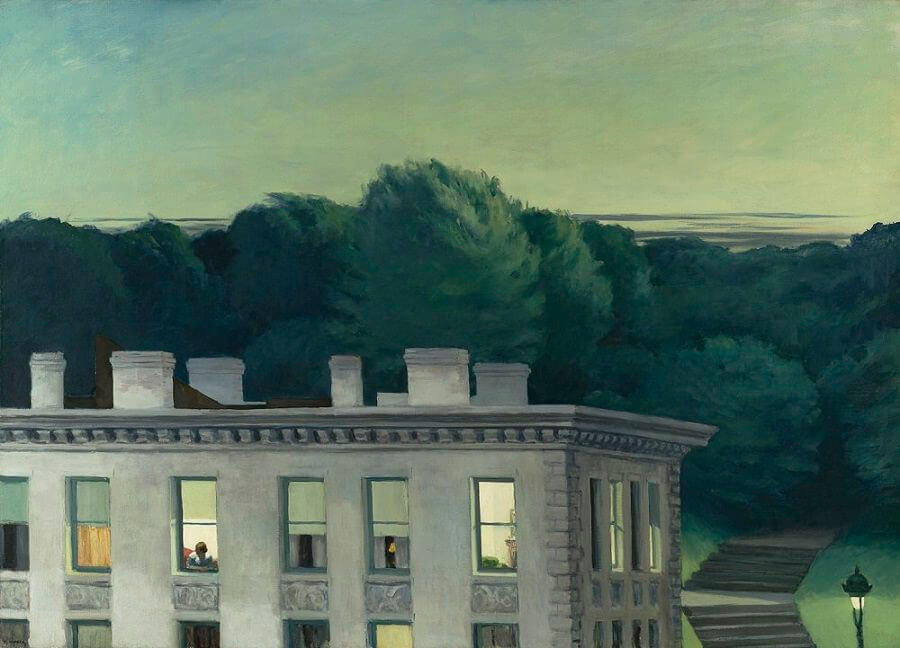
The painting style Hopper worked out in the early 1920s was not fundamentally different from that of Rene Magritte (who, incidentally, initially made his living as an illustrator and commercial artist). Nothing could be more foreign to this type of idiom than bravura brushwork. Like Magritte, Hopper strove above all to achieve an internal consistency of composition and homogeneity of pictorial form. Only in his landscapes did Hopper continue, into the 1930s, to permit himself the freedom of pulling forms together into expansive units, and of letting the brushstroke stand as an autonomous pictorial element in certain passages.
It is interesting to compare Rene Magritte's Empire of Light, 1950 - one of seventeen versions of the subject he painted - with Hopper's House at Dusk, 1935. Apart from the fact that Hopper's picture seems more eerie, because more real, than Rene Magritte's heightened reality, the comparison shows that the effect of such motifs depends largely on a painting technique oriented towards photographic precision. Yet despite a renunciation of sumptuous brushwork, the technique can still evince great finesse in paint handling, as Hopper's painting indicates even more than Magritte's.



